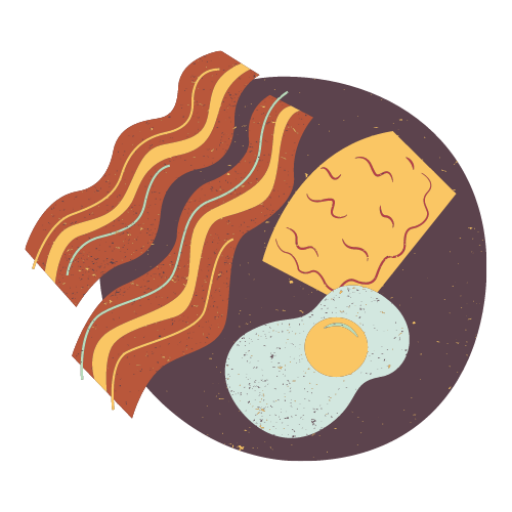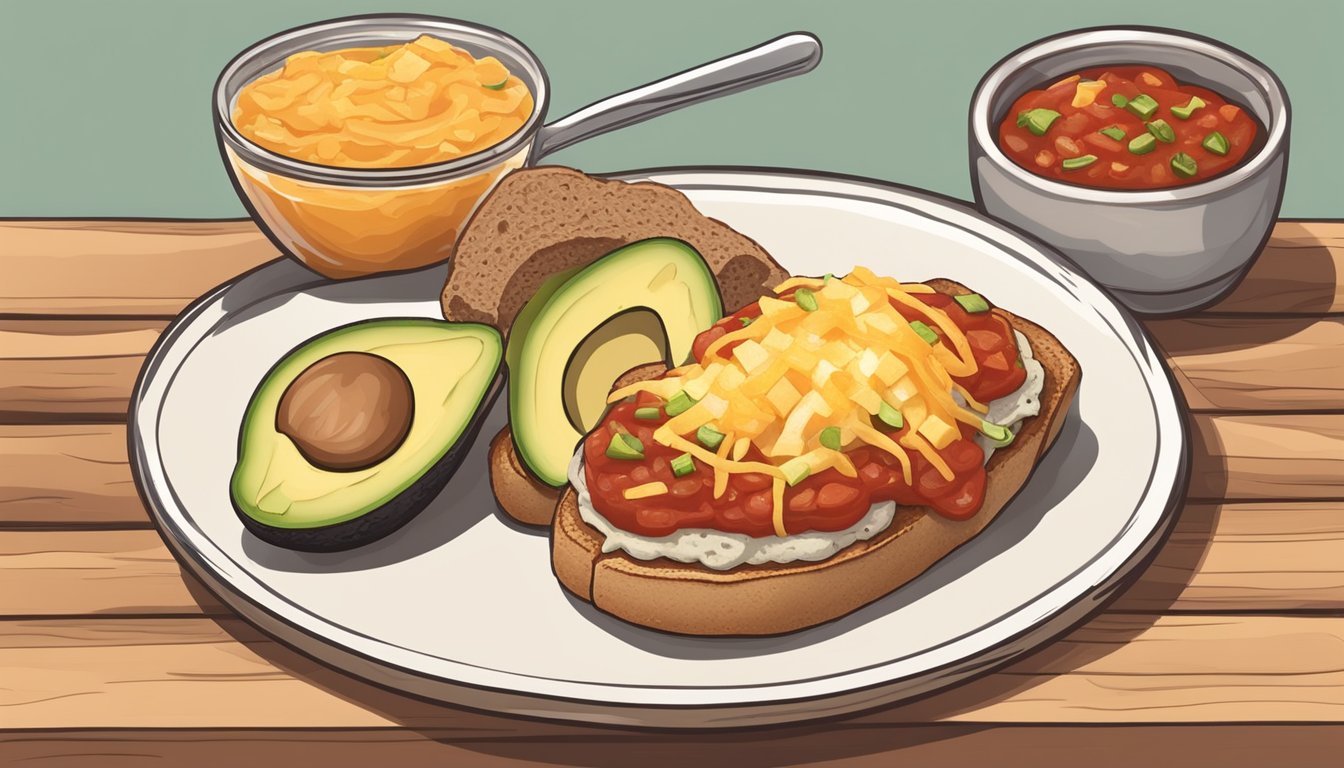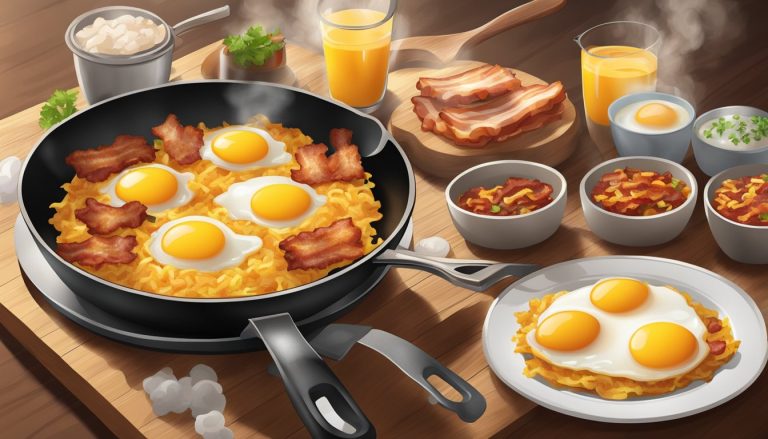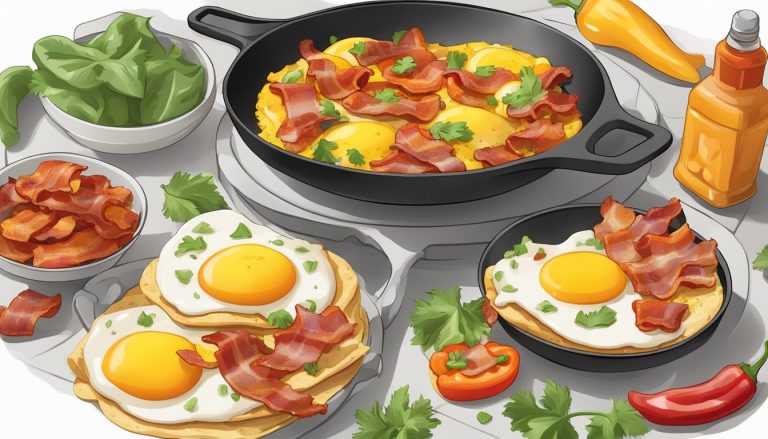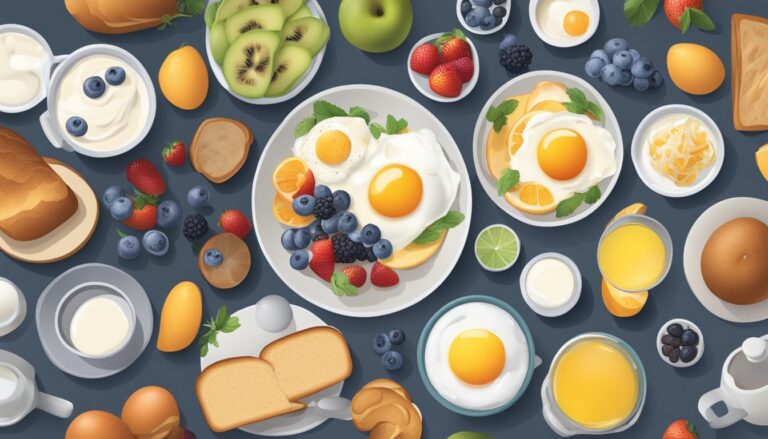Molletes, a beloved Mexican breakfast staple, offer a delightful start to any morning. These open-faced sandwiches combine crusty bread, creamy refried beans, and melted cheese for a simple yet satisfying meal. Traditional molletes are elevated with toppings like fresh pico de gallo, avocado slices, and a drizzle of salsa, creating a perfect balance of flavors and textures.
Authentic Mexican molletes begin with a sturdy bolillo roll, sliced lengthwise and toasted until golden brown. The crisp bread provides an ideal base for a generous spread of warm refried beans, followed by a layer of cheese that’s melted to perfection under the broiler. This classic preparation allows for endless variations, making molletes a versatile dish that can be customized to suit individual tastes.
While molletes are often enjoyed for breakfast, their hearty nature makes them suitable for any time of day. The combination of protein-rich beans and cheese offers a filling meal that can be quickly prepared, making it a popular choice for busy mornings or a casual brunch. With their roots in Mexican cuisine, molletes represent a tasty fusion of traditional ingredients and modern convenience.
The History of Molletes

Molletes have their roots in Spanish cuisine but evolved into a beloved Mexican breakfast staple. The name “mollete” originally referred to a small, round bread roll in Spain’s Andalusia region.
Mexican molletes emerged as a distinct dish in the mid-20th century. They adapted the Spanish bread concept by using bolillo rolls, a crusty Mexican bread similar to French baguettes.
The transformation from plain bread to hearty open-faced sandwich occurred gradually. Cooks began topping halved bolillos with refried beans, melted cheese, and salsa.
Northern Mexico played a key role in popularizing molletes. The dish spread throughout the country, becoming a common offering in cafes and restaurants.
Today, molletes are considered quintessential Mexican comfort food. They’re especially popular for breakfast but are enjoyed at any time of day.
Variations have developed over time. Some add eggs, meat, or avocado. Others experiment with different types of cheese or beans.
Despite these innovations, the basic formula remains largely unchanged. Crispy bread, creamy beans, and melted cheese continue to define this satisfying Mexican breakfast classic.
Essential Ingredients

Creating the perfect breakfast molletes requires a carefully chosen combination of high-quality ingredients. The foundation of this beloved Mexican dish lies in its core components: bread, beans, cheese, and flavorful toppings.
Breads Used in Molletes
Bolillos are the traditional choice for molletes, providing a crusty exterior and soft interior. These oval-shaped Mexican rolls are similar to French bread but with a denser crumb. Teleras, another Mexican roll variety, offer a flatter shape and work well as an alternative. In a pinch, French bread or other crusty rolls can be used. The bread is typically sliced lengthwise and toasted until golden brown, creating a sturdy base for the toppings.
Types of Beans
Refried beans form the next layer of molletes. Pinto beans are most common, mashed and cooked with fat until creamy. Black beans offer a richer flavor profile and are gaining popularity. Home-cooked beans provide the best taste and texture, but high-quality canned refried beans can be a convenient option. The beans should be warm and spreadable, creating a smooth layer on the toasted bread.
Varieties of Cheese
Melty cheese is crucial for authentic molletes. Oaxaca cheese, with its stringy texture, is a top choice. Monterey Jack or pepper Jack provide excellent meltability and flavor. Queso fresco adds a fresh, crumbly texture. Cheddar or Colby can be used for a sharper taste. The cheese should be generously sprinkled over the beans and melted under the broiler until bubbly and slightly golden.
Salsas and Toppings
Fresh toppings elevate molletes from simple to sublime. Pico de gallo, a mix of diced tomatoes, onions, cilantro, and jalapeños, adds brightness and crunch. Salsa verde offers a tangy, spicy kick. Sliced avocado provides creaminess. A squeeze of lime juice enhances flavors. Hot sauce can be drizzled for extra heat. These toppings should be fresh and vibrant, complementing the rich beans and cheese beneath.
Preparing the Base

The foundation of exceptional breakfast molletes lies in properly preparing the bread and beans. Selecting quality ingredients and executing key techniques ensures a crispy exterior and creamy interior.
Baking and Toasting Bread
Bolillo bread is the traditional choice for molletes Mexicanos. These crusty rolls provide an ideal base for the toppings. To prepare:
- Slice bolillos lengthwise
- Spread a thin layer of salted butter on cut sides
- Toast under broiler for 3-4 minutes until golden brown
- Alternatively, griddle over medium heat until crisp
The goal is a crunchy exterior that can support the toppings while maintaining a soft interior. Watch closely to prevent burning, as the high sugar content in bolillos can cause rapid browning.
Preparing Beans for Molletes
Refried beans form the creamy layer that anchors the mollete toppings. For best results:
- Use pinto or black beans
- Mash cooked beans with a potato masher or fork
- Add salt to taste
- Heat beans in a skillet with a small amount of oil
- Stir frequently until warmed through and slightly thickened
The consistency should be spreadable but not runny. Adjust thickness by adding small amounts of bean cooking liquid or water if needed. Warm beans spread more easily and create a better bond with the bread.
Assembling Molletes
Creating delicious molletes requires careful layering and proper cheese melting. The open-faced sandwich structure allows for easy customization while ensuring each bite contains the perfect blend of flavors.
Layering Ingredients
Start with a split bolillo roll or baguette piece, toasted until golden brown. Spread a layer of refried beans evenly across the bread’s surface. This forms the base for additional toppings. Add cooked chorizo and potatoes if desired for extra flavor and texture.
Next, sprinkle shredded cheese generously over the beans. Queso Oaxaca is traditional, but Monterey Jack works well too. For best results, use about 1/4 cup of cheese per roll half.
Place prepared molletes on a baking sheet lined with parchment paper. This prevents sticking and makes cleanup easier.
Cheese Melting Techniques
Preheat the oven to 400°F (200°C). Place the baking sheet with assembled molletes on the middle rack. Bake for 5-7 minutes until the cheese melts completely and starts to bubble.
For a golden-brown finish, switch to the broiler for the last 1-2 minutes. Watch closely to prevent burning. Remove from oven when cheese is melted and edges are crispy.
Let cool for 1-2 minutes before serving. This allows the cheese to set slightly, making it easier to handle. Serve immediately for the best taste and texture.
Customizing Your Molletes

Molletes offer endless possibilities for personalization. Their versatility allows for creative combinations of proteins, toppings, and vegetarian adaptations to suit any taste preference or dietary need.
Protein Additions
Chorizo adds a spicy kick to molletes. Crumble and cook the chorizo before spreading it over the beans. Bacon lovers can top their molletes with crispy bacon bits for a smoky flavor. For a heartier option, try carne asada. Grill thin slices of beef, chop them finely, and sprinkle over the beans.
Eggs are a popular protein choice for breakfast molletes. Add scrambled eggs for a fluffy texture, or top with a fried egg for a runny yolk that mixes with the beans and cheese. Sprinkle black pepper over the eggs for extra flavor.
Custom Toppings
Fresh toppings elevate molletes from simple to extraordinary. Diced tomatoes, sliced avocado, and chopped cilantro add freshness and color. For heat lovers, jalapeños or serrano peppers bring a spicy kick.
Create a pico de gallo by mixing diced tomatoes, onions, cilantro, and lime juice. Spread it over the melted cheese for a zesty touch. Crumbled queso fresco or cotija cheese adds a tangy, salty flavor.
For a creamy element, dollop sour cream or Mexican crema on top. Pickled red onions provide a tangy contrast to the rich beans and cheese.
Vegetarian Options
Vegetarian molletes are easy to create and packed with flavor. Replace refried beans with black beans or pinto beans for variety. Add sautéed mushrooms for a meaty texture without the meat.
Grilled vegetables like zucchini, bell peppers, and onions make excellent toppings. Roasted corn kernels add sweetness and crunch. For protein, consider adding crumbled tofu seasoned with Mexican spices.
Guacamole is a creamy, nutritious topping that complements the beans and cheese perfectly. Sprinkle pumpkin seeds or sunflower seeds for added nutrition and crunch. These options make molletes a satisfying and quick vegetarian snack or meal.
Serving Suggestions
Molletes are versatile Mexican open-faced sandwiches that can be enjoyed at various times of day. They offer a delicious blend of flavors and textures, making them suitable for different meals and occasions.
Molletes for Every Meal
Molletes shine as a breakfast staple, providing a hearty start to the day. Serve them with a side of scrambled eggs or huevos rancheros for a protein-packed morning meal. For lunch, pair molletes with a light salad or soup for a satisfying midday option. As a snack, smaller portions of molletes can be prepared using baguette slices instead of bolillo rolls. Evening diners can enjoy molletes as a quick dinner by adding grilled chicken or beef on top.
Pairings and Side Dishes
Complement molletes with traditional Mexican side dishes to create a well-rounded meal. Serve them alongside chilaquiles verdes for a tangy contrast to the rich beans and cheese. A fresh pico de gallo or chunky salsa adds a zesty kick. For a lighter touch, offer a side of sliced avocado or guacamole. Roasted vegetables like zucchini or bell peppers provide a nutritious accompaniment. To enhance the Mexican flavors, pair molletes with horchata or agua fresca for a refreshing beverage option.
Nutritional Information

Breakfast molletes offer a balanced mix of nutrients to start the day. The typical ingredients provide a combination of carbohydrates, proteins, and fats.
A standard mollete contains approximately 300-400 calories, depending on the size and toppings. The bread base supplies complex carbohydrates for sustained energy.
Refried beans contribute protein and fiber, essential for satiety and digestive health. They also provide iron and magnesium.
Cheese adds calcium and protein, supporting bone health and muscle function. However, it also increases the fat content of the dish.
Fresh toppings like tomatoes, onions, and cilantro provide vitamins and antioxidants. These contribute minimal calories while boosting nutritional value.
For a healthier option, consider whole grain bread and low-fat cheese. Adding extra vegetables can increase fiber and nutrient content without significantly impacting calories.
Protein content can be enhanced by adding eggs or lean meats like turkey. This modification turns molletes into a more substantial meal.
It’s important to note that traditional molletes can be high in sodium. Opting for homemade refried beans and controlling salt in toppings can help manage sodium intake.
